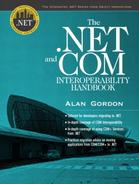1. The Health Information Revolution
Healthcare is Communication
Modern healthcare depends on teamwork and communication. Interoperability is needed to provide information when and where required, facilitate quicker and more soundly based decision making, reduce waste by cutting out repeated work and improve safety with fewer errors.
Convergence of digital health interoperability, wireless sensors, imaging technology and genomics will transform the way that healthcare is practiced, its efficiency and effectiveness. Patients using their own mobile devices are leading this revolution. Patients wont wait, even if it takes years for physicians to adopt new medical advances [].
Most healthcare processes involve communication within the system. Billions of documents are generated mostly using pen and paper. Healthcare remains the largest remaining market for pens, paper and fax-machines. The long-promised digital health revolution has been slow to arrive and is still characterized by hope, hype and harm []. Large initiatives such as the $30Bn Meaningful Use scheme have failed to improve efficiency as much as was hoped, in large part due to failure to address interoperability at the clinical level.
Paper-based patient records are widely recognised as unfit for purpose. What Bleich complained of more than 20 years ago is still common:
The medical record is an abomination it is a disgrace to the profession that created it. More often than not the chart is thick, tattered, disorganized and illegible; progress notes, consultants notes, radiology reports and nurses notes are all co-mingled in accession sequence. The charts confuse rather than enlighten; they provide a forbidding challenge to anyone who tries to understand what is happening to the patient (Bleich 1993) [].
Paper records can only be used by one person at a time, and are often not where they are needed. Once to hand, it is hard to find what you want in a disorganized, illegible, inconsistent, incomplete, badly sorted collection. The user has to work hard just to glean any useful information. An enormous amount of staff time is spent locating, transporting and reviewing these paper repositories.
On the other hand, it is easy to overlook just how flexible and durable paper-based patient records are in spite of these deficiencies. EHRs need to become just as flexible, reliable and easy to use.
Traditionally, healthcare information systems have been organised hierarchically on the basis of the flow of money and authority, flowing from payer to provider organizations and down to departments, clinicians and finally patients. This model is way out of alignment with the natural flow of information needed to care for individual patients, which is more like a social network, with each patient at the center of his or her own net.
All people want the same things from health and social care. They want to feel better physically and mentally, to do more and be independent. They want this now and in the future, with a long healthy life followed by a quick peaceful death, not a slow demise. Every patient also wants excellent care and service, to be treated kindly, to be listened to and have issues fully explained, be seen promptly and for systems to perform reliably and safely.
More confident and engaged patients tend to report better outcomes and exp erience and have lower costs. These patients are typically more empowered, knowledgeable, confident to manage their own health, able to get help when they need it and participate in shared decision-making,
Given that patients are the sole reason for healthcare activity, health services increasingly need to focus on the outcomes that matter to patients. Great organizations have always used a small number of key performance indicators (KPIs).
What matters is settling upon a consistent and intelligent method of assessing your outcome results and then tracking your trajectory with rigor (Collins 2006) [].
Efforts to improve quality often lead to lower costs, while efforts to cut costs invariably lead to lower quality. The primary focus needs to be on quality improvement not cost cutting.
In a person-centered model, care is based on continuous clinical relationships, customized to individual patient needs, with the patient ultimately in control. Knowledge is shared, information flows freely and decisions are based on evidence. Transparency and collaboration are virtues, patient needs are anticipated and effort is devoted to eliminating waste, which is any activity that costs money but delivers no benefit to patients.
However, todays healthcare information systems were designed mainly to support the traditional medical model, based around discrete conditions, visits and episodes. Each clinician decides independently on what investigations and treatment to order based on their training and experience. This has led to large variation in treatment, much of which is unwarranted (Wennberg 2010) []. The patient record is often just a log of what happened, incentivized to maximize fee income and kept secret from the patient. The system defends professional demarcation and reacts to patient needs only as and when they arise.
However, when so much of what we do is performed over the Internet, there are no technical barriers to sharing information and providing joined-up patient-centered care, yet good interoperability remains a rarity.
Back in 2001 the Institute of Medicine in Crossing the Quality Chasm set out rules for a person-centered healthcare system [).
Table 1.1
Contrast between traditional and patient-centered healthcare models (Based on Institute of Medicine 2001)
Aspect | Traditional | Patient-centered |
|---|
Focus of care | Discrete visits/episodes | On-going care relationship |
Variation mainly due to | Professional autonomy | Patient needs and values |
Control | Professionals in control | Patient in control |
Decisions based on | Training and experience | Evidence |
Safety | Individual responsibility | A system property |











![Robert Hugh Benson [Benson - Robert Hugh Benson Collection [11 Books]](/uploads/posts/book/139831/thumbs/robert-hugh-benson-benson-robert-hugh-benson.jpg)


